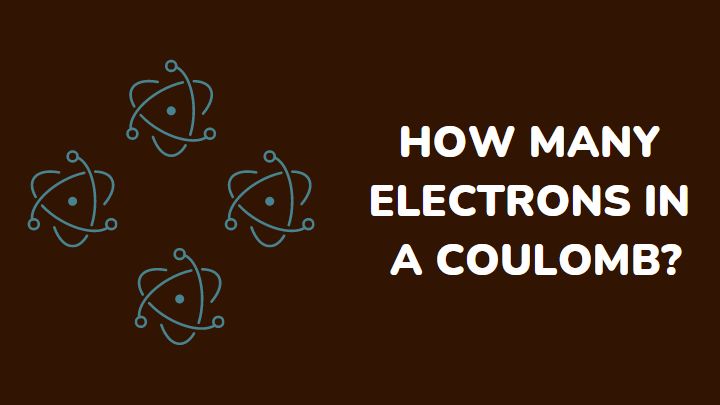A coulomb (C) measures the amount of charge collected by one Ampere of electric current in one second. This electric current (or electricity) is created by the movement of electrons. If one coulomb measures electricity, how many electrons can you find in a coulomb of electricity?
Read this article to find out.
How many electrons are in a coulomb?
1 C contains approximately 6.24 x 1018 electrons. Simply put, this value is 6,241,509,070,000,000,000 electrons.
How many electrons are in 2 coulombs?
2 C charge contains 1.25 × 1019 electrons. This value is a product of the amount of Coulomb charge and the number of electrons in 1 C.
How many electrons are in a microcoulomb?
A microcoulomb (micro C) contains approximately 6.25 x 1012 electrons.
1 micro C = 10-6 x 6.24 x 1018 = 6.25 x 1012
How many moles of electrons are in a coulomb?
One mole of electron equals 96,500C, which is equal to 1 Faraday.
1 C would, therefore, contain
1 mole of electron = 96,500C
X moles of electrons = 1 C
1 C will contain 1/96,500C
1 C will contain 1.036 x 10-18
FAQs
How many protons are in 1 coulomb?
1 coulomb charge contains 6.24 x 1018 protons.
What is the charge of 1 electron?
1 electron has a charge of 1.602 × 10-19 coulombs. An electron (-e) is a negatively charged particle in any atom.
What is the largest unit of charge?
The Faraday (approximately 96,500C) is the largest unit of charge in chemistry.
Conclusion
Electricity cannot work without the movement of electrons. And this electrical charge generated is measured in Coulomb.
1 C is approximately 6.24 x 1018 particles (6,241,509,070,000,000,000). To measure more than one Coulomb, find the product of the number of Coulombs and 6.24 x 1018.
Thanks for reading.
Read more articles on charge and electricity on Gezro.
